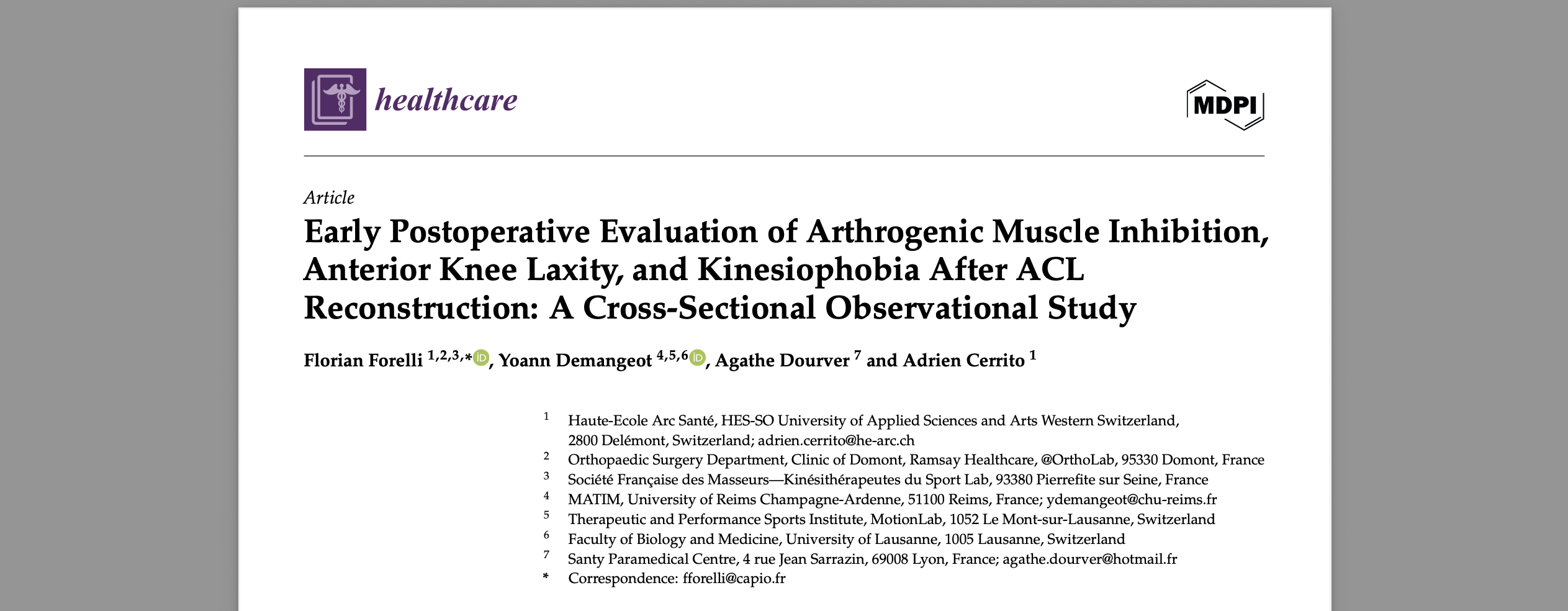Introduction
The anterior cruciate ligament (ACL) is a crucial component in the complex architecture of the human knee. Primarily responsible for ensuring stability and facilitating smooth joint mobility, the ACL plays a pivotal role in our everyday movements, especially in athletic activities.
Located centrally within the knee, this ligament connects the femur (thighbone) to the tibia (shinbone), forming an essential part of the knee joint. Unfortunately, ACL injuries are a common yet significant concern, impacting a diverse range of individuals, from professional athletes to the general population. The nature of these injuries, which can range from partial tears to complete ruptures, often necessitates a nuanced understanding for effective management.
This article aims to provide an insightful overview of the ACL, encompassing its anatomy, functionality, associated injuries, and the latest in diagnostic and treatment modalities. Understanding the intricacies of the ACL is vital not only for medical professionals but also for patients, ensuring informed decisions and optimized care pathways.
1. Anatomy of the Anterior Cruciate Ligament
The anterior cruciate ligament (ACL) is a fundamental ligament within the knee joint, crucial for maintaining knee stability. This ligament, typically about 38mm long and 11mm wide, comprises two bundles: the anteromedial (AM) and the posterolateral (PL). These bundles work together, enabling the ACL to manage the varying demands placed on the knee joint.

Located centrally in the knee, the ACL stretches from the posterior part of the femur to the anterior intercondylar area of the tibia. This strategic placement is key for controlling the tibia’s motion relative to the femur, especially in preventing excessive anterior translation and rotation of the tibia, which is vital for joint stability.
The vascular supply to the ACL primarily comes from the middle genicular artery, essential for its nourishment and healing. Additionally, the ligament contains proprioceptive nerve fibers, playing a significant role in the knee’s neuromuscular control by relaying sensory feedback to the brain. This feedback is crucial for maintaining joint stability and coordination.
In terms of biomechanics, the ACL demonstrates remarkable strength and resilience. It is capable of withstanding loads of up to 500 Newtons, highlighting its essential role in the biomechanical function of the knee. This strength is crucial for activities that involve pivoting, jumping, or sudden changes in direction, where the ACL helps in distributing forces and maintaining knee stability.
2. Function of the Anterior Cruciate Ligament
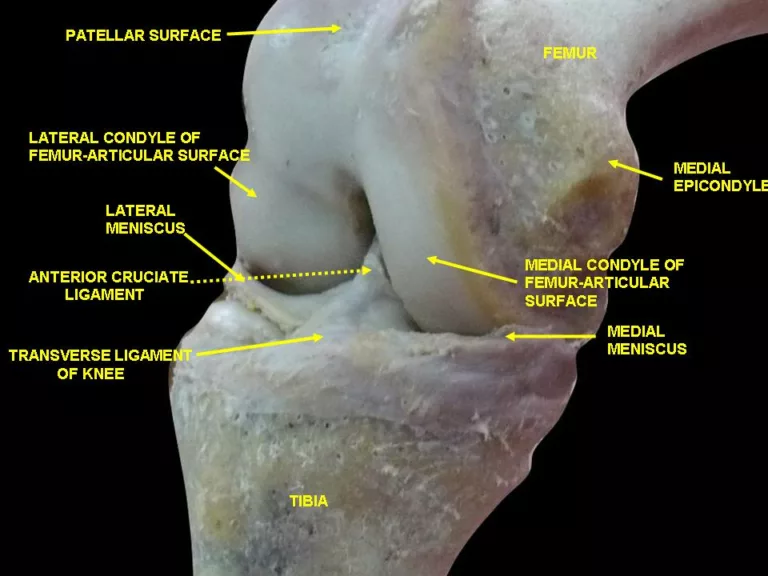
The anterior cruciate ligament (ACL) is instrumental in the kinematics of the knee joint, enabling fluid and controlled movements. It acts as a biomechanical restraint, stabilizing the knee during both static postures and dynamic activities. In actions requiring pivoting, jumping, or rapid directional changes—common in sports like basketball, soccer, and skiing—the ACL is particularly vital. It helps to prevent the tibia from sliding out in front of the femur and provides rotational stability to the knee.
Beyond its mechanical role, the ACL is integral to the knee’s proprioceptive function. It is equipped with mechanoreceptors that sense changes in tension and speed, which then inform the central nervous system about joint position and movement. This sensory feedback loop is critical for neuromuscular control, allowing for reflexive adjustments in muscle activity to maintain joint stability. For instance, during a sudden stop, the ACL’s proprioceptive input helps to activate the quadriceps and hamstrings in a coordinated manner to protect the joint from injury.
The combined mechanical and sensory functions of the ACL are essential not only for athletic performance but also for everyday activities, ensuring our movements are both stable and responsive to our environment.
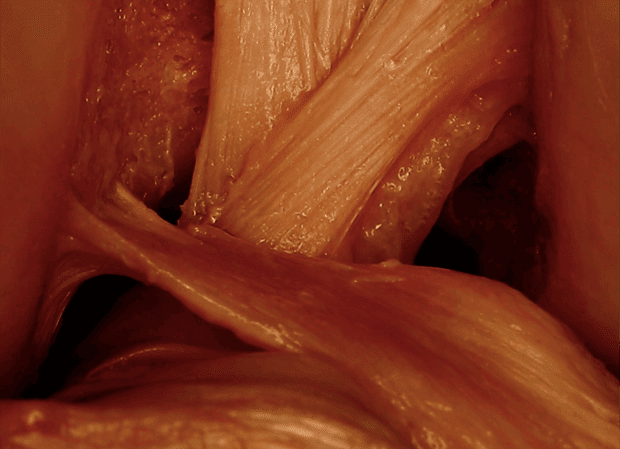
3. Common ACL Injuries
Anterior cruciate ligament (ACL) injuries are a common and often significant concern for both athletes and the general population. These injuries can range from partial tears, where only a portion of the ligament is damaged, to complete tears, which involve the entire ligament and result in joint instability. Another severe type of injury is an avulsion fracture, where the ACL tears off a piece of the bone from its attachment, a condition requiring immediate medical attention.
The mechanisms of injury to the ACL are varied. In sports, they frequently occur during non-contact scenarios such as sudden stops, pivoting, or landing from a jump. Contact injuries can also lead to ACL damage, often seen in sports like football or rugby, where direct blows to the knee are more common. Additionally, accidents, such as falls or motor vehicle collisions, can exert excessive force on the knee, leading to an ACL rupture.
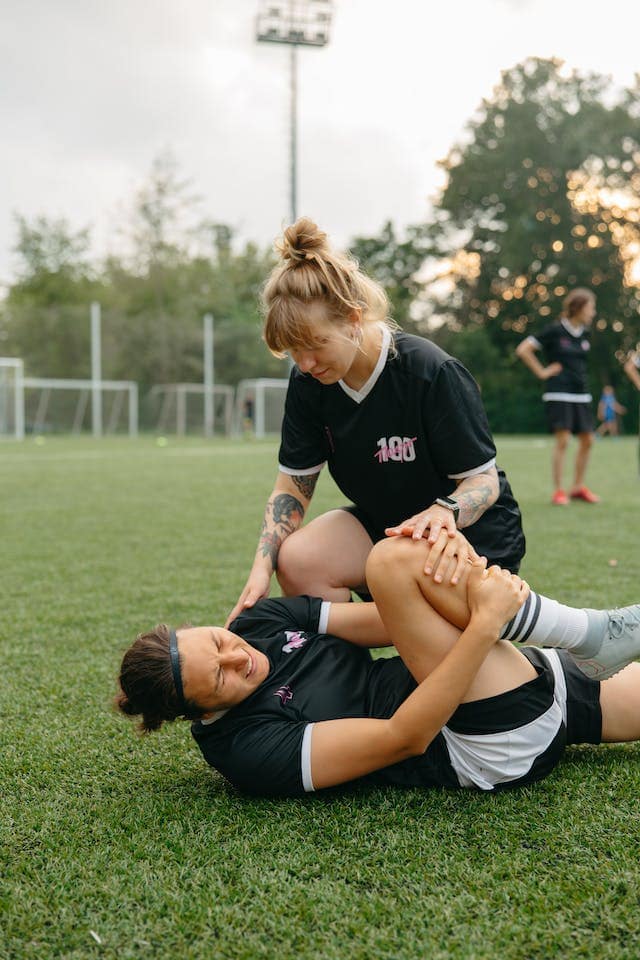
However, not all ACL injuries are due to traumatic events; degenerative changes also play a role, particularly in older populations. Over time, the ligament can weaken and become less elastic, predisposing it to tears even with minimal stress.
Several risk factors have been identified for ACL injuries. Age is a crucial factor; while younger individuals are more susceptible to sports-related injuries due to higher activity levels, older adults face a greater risk from degenerative tears. Gender also plays a role, with research showing that female athletes are more prone to ACL injuries than their male counterparts due to differences in muscle strength, hormonal influences, and biomechanics.
Sports participation is another significant risk factor, especially in sports requiring frequent and rapid changes in direction, jumping, and contact with other players. Additionally, individuals with certain anatomical considerations, such as those with a narrow intercondylar notch (the space within the femur where the ACL passes) or a naturally more lax ligamentous structure, may be at increased risk.
Preventative strategies are key, particularly in high-risk groups. Neuromuscular training programs have been shown to reduce the incidence of ACL injuries by improving strength, coordination, and proprioceptive abilities. Proper technique in sports movements, adequate warm-up routines, and the use of supportive braces when indicated can also help mitigate injury risk.
When an ACL injury does occur, it can be a significant setback for an individual, requiring a combination of rest, rehabilitation, and sometimes surgical intervention to regain full function of the knee. The treatment plan is often tailored to the individual’s specific injury, level of activity, and goals.
The impact of an ACL injury extends beyond physical limitations, often affecting psychological well-being and quality of life. As such, a multidisciplinary approach to treatment and rehabilitation is crucial, involving physicians, physical therapists, and sometimes sports psychologists.
In summary, the ACL is a critical ligament for knee stability, and injuries to it can be quite debilitating. Understanding the types of ACL injuries, their mechanisms, and risk factors is essential for prevention, timely diagnosis, and effective treatment. With ongoing research and advancements in medical science, there is hope for improved outcomes and quicker recoveries for those affected by ACL injuries.
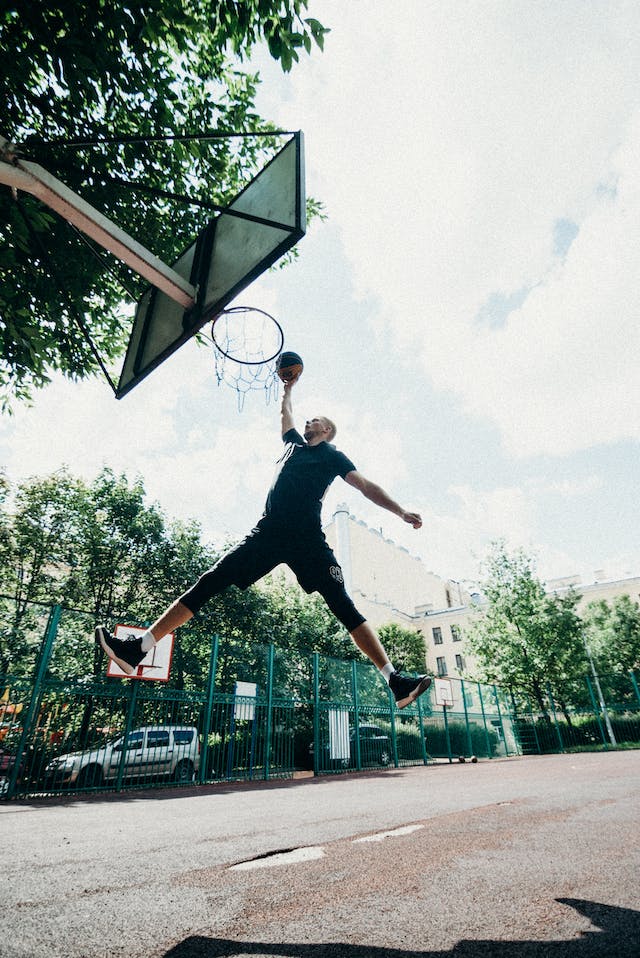
4. Common ACL Injuries
The diagnosis of ACL injuries commences with a comprehensive clinical evaluation. An accurate history helps ascertain the cause of injury, complemented by a physical examination. Special tests like the Lachman test and pivot-shift test are crucial to evaluate the ACL’s integrity and knee joint stability.
Imaging modalities are pivotal in the confirmation of the diagnosis. An X-ray is useful to exclude bone fractures and check the alignment of the joint. MRI imaging stands as the definitive method for visualizing soft tissue damage and is invaluable in detailing the ACL and its context. Ultrasound imaging is advantageous for dynamic assessment and real-time evaluation of the ligament.

The role of Arthrometers is pivotal in this process, particularly devices like the GNRB® and DYNEELAX®, which have been specifically recognized for their efficacy in diagnosing partial ruptures of the ACL. These devices measure knee joint laxity by quantifying tibial displacement and rotational laxity, providing objective data on the severity of an ACL tear. Studies suggest that the GNRB® arthrometer, in particular, offers superior diagnostic accuracy for partial ACL tears (DOI: 10.1016/j.knee.2023.03.017), making it an invaluable tool for such complex diagnoses. Furthermore, advancements like the DYNEELAX® allow for measuring both translational and rotational movements, offering a comprehensive view of knee laxity (DOI: 10.1016/j.medntd.2023.100254).
Differential diagnosis is essential to rule out other causes of knee pain and instability, such as damage to other ligaments, menisci, or the joint capsule. A thorough diagnostic approach ensures an accurate identification of the ACL injury and aids in the development of an effective treatment plan.
5. Treatment Options
Treatment of ACL injuries depends on the severity of the ligament damage and the individual’s lifestyle needs. Non-surgical management may be suitable for those with partial tears or low-demand lifestyles. This approach includes physical therapy to strengthen the muscles around the knee, thus enhancing joint stability. Bracing can provide external support during activities, and activity modifications may be necessary to avoid actions that could exacerbate the injury.
For complete tears or active individuals, surgical intervention, specifically ACL reconstruction, is often recommended. This procedure involves replacing the torn ligament with a graft—either autograft (from the patient) or allograft (donor tissue). Surgeons will consider various factors, including the patient’s age, activity level, and the presence of concurrent knee injuries when selecting the appropriate surgical technique and graft type.
Following surgery, a structured postoperative rehabilitation protocol is crucial for recovery. Rehabilitation focuses on gradually restoring knee function, strength, and flexibility. Patients work through a series of stages, starting with reducing swelling and advancing towards regaining full range of motion, strength, and eventually returning to normal activities or sports.

5. Prevention and Future Directions
Prevention of ACL injuries is as crucial as their treatment. Effective preventive strategies include training modifications that focus on improving technique, balance, and joint stability. Incorporating neuromuscular training into regular exercise regimens can significantly reduce the risk of ACL injuries. This training emphasizes correct movement patterns, strengthening muscles around the knee, and enhancing proprioception.
The future of ACL treatment is marked by exciting research and advancements. Current studies are exploring the use of biologic treatments, such as stem cells and growth factors, to enhance ligament healing and regeneration. There is also a growing interest in developing more anatomically accurate and biomechanically sound surgical techniques for ACL reconstruction. Furthermore, advancements in diagnostic tools, including more sophisticated imaging techniques and the refinement of arthrometers, are improving the accuracy of injury assessment. These innovations promise more effective and individualized treatments for ACL injuries, potentially leading to better outcomes and quicker recoveries.
Conclusion
In conclusion, the anterior cruciate ligament (ACL) is a crucial component in knee stability, whose intricate anatomy and essential function play a pivotal role in our mobility. Understanding the mechanisms of ACL injuries, coupled with advancements in diagnostic methods like arthrometers, aids in early and accurate detection. The choice between non-surgical management and surgical reconstruction, followed by comprehensive rehabilitation, is vital for optimal recovery. Accurate diagnosis and tailored treatment approaches are paramount for patient outcomes. Ongoing research and technological advancements continue to revolutionize ACL injury management, promising enhanced treatment strategies and improved quality of life for those affected.
Medical References (Link in DOI)
- Robert, H., Nouveau, S., Gageot, S., & Gagnière, B. (2009). A new knee arthrometer the GNRB®: Experience in ACL complete and partial tears. Orthopaedics & Traumatology: Surgery & Research, 95, 171-176. DOI: 10.1016/j.otsr.2009.03.009.
- Collette, M., Courville, J., Forton, M., & Gagnière, B. (2012). Objective Evaluation of Anterior Knee Laxity: Comparison of the KT-1000 and GNRB Arthrometers. Knee Surg Sports Traumatol Arthrosc. DOI: 10.1007/s00167-011-1869-2.
- Lefevre, N., Bohu, Y., Naouri, J. F., Klouche, S., & Herman, S. (2013). Validity of GNRB Arthrometer Compared to Telos in the Assessment of Partial Anterior Cruciate Ligament Tears. Knee Surg Sports Traumatol Arthrosc. DOI: 10.1007/s00167-013-2384-4.
- Jenny, J.-Y., Puliero, B., Schockmel, G., Harnoist, S., & Clavert, P. (2017). Experimental Validation of the GNRB for Measuring Anterior Tibial Translation. Orthopaedics & Traumatology: Surgery & Research. DOI: 10.1016/j.otsr.2016.12.011.
- Cojean, T. (2023). MRI vs. GNRB in ACL Injuries Detection: A Comparative Study. Journal of Orthopedic Research and Therapy. DOI: 10.1016/j.knee.2023.03.017.
- Cojean, T. (2023). Sensitivity, Repeatability, and Reproducibility Study with a Leg Prototype of a Recently Developed Knee Arthrometer Dyneelax. Journal of Biomechanics. DOI: 10.1016/j.medntd.2023.100254.


